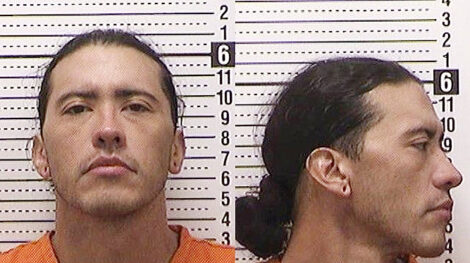Council debates, approves latest budget draft

Jill Schramm/MDN Operations Director Bryan Banfill with the Public Works Department discusses funding for the city fleet at the Monday, Sept. 15, Minot City Council meeting.
Minot taxpayers could get a break with the Minot City Council’s decision to bolster the budget with $2 million from cash reserves.
The vote was among those taken by the council – often in the face of controversy – on Monday, Sept. 15, to pull a final budget together. Other votes supported an ordinance change to create more flexibility in sales tax spending and to withdraw Minot from the North Dakota League of Cities.
Council member Mike Blessum proposed returning $2 million to taxpayers on top of the $3.6 million spent from reserves this year as part of his schedule to return more than $7.26 million by 2028. The $7.26 million was the amount identified by auditors in 2023 as overcollected by the city.
“This is owed back to the people. It’s as pure and simple as that,” Blessum said.
Finance Director David Lakefield clarified the $7.26 million had been spent before the audit came to the council. The city had been setting money aside for capital purchases but instead of placing it in a capital account, it was placed in the general fund, causing the general fund to build reserves to a level that exceeded the city’s statutory authority.
Lakefield said there were discussions with the auditors about the accounting practice and whether the money should have been counted as part of the general fund balance.
“There really wasn’t an impact at the end of the day. The money had been spent. The amount had been reduced at that point. So going forward, that money was gone already,” Lakefield said.
Blessum reiterated excess property taxes were levied.
“If the council believes that this finding does not justify giving their money back and we simply want to protect the big pile of money we have sitting over in the corner for the rainy day coming, that’s fine. That’s what the vote is for,” Blessum said.
“We have $43 million in excess reserves right now,” council member Rob Fuller said. “I realize there’s some big projects coming that we’re going to spend some of that on, and we have to have some of it as actual reserves, but we have more than we need.”
“If individuals were taxed under the premise that these dollars would go to work for them, I would rather put them to work than subsidize our budget,” council member Paul Pitner said.
“This is not subsidizing the budget. This is giving people their money back,’ council member Scott Samuelson responded.
The decision to spend $2 million of the reserve in 2026 came on a 5-2 vote, with Pitner and council member Lisa Olson opposed.
The council adopted most of the changes to the budget included in the president’s message provided by former president, Mayor Mark Jantzer, and vice president Lisa Olson on Aug. 18. However, the council also eliminated the position of executive secretary and canceled creation of a new heavy equipment operator position, which ran counter to the president’s recommendations.
Another president’s recommendation was to adopt a sales tax ordinance that allows for flexibility in the distribution of funds based on annual needs. The intention for 2026 is to redirect some of the 15% of sales tax allocated to economic development.
The council indicated sales tax dollars of nearly $700,000 would go to Minot Area Chamber EDC as originally proposed, but the remaining share of the economic development sales tax would go into the general fund for property tax relief. The money could be used for economic development or other uses to take pressure off property taxes.
The motion to direct staff to draft the sales tax ordinance carried 5-2, with Olson and Pitner opposed.
Brian Billingsley, community and economic developer for the city, presented the recommendation of the Renaissance Zone Committee for phasing out the Facade Improvement program for downtown by 2030.
Samuelson called the facade program “out of control.” He said the city is supporting most of the improvement cost rather than funding a supplemental share.
Samuelson also moved to withhold $25,000 in dues for membership in the League of Cities, citing the league’s legislative lobbying that ran contrary to the City of Minot’s position against a tax levy cap. He said the league preferred to negotiate the cap, and Blessum added the tactic wasn’t successful and the league fell in line with the final 3% cap.
Pitner called the motion “personal politics” that makes Minot look bad. Samuelson denied playing politics, adding it also is not politics to oppose the league using taxpayer money to campaign against the measure to eliminate property taxes.
The motion narrowly passed 4-3, with Samuelson, Blessum, Rob Fuller and Mike Hayes in favor and Jantzer, Olson and Pitner opposed.
The council killed a motion 0-7 that would have imposed a new half percent sales tax for five years to help fund police and fire department expenses, other than salary and benefits. The five years was based on the projected sunset of the Northwest Area Water Supply portion of the sales tax.
Blessum pushed the motion in frustration with Pitner’s stance on shifting expenses that don’t require a set revenue to sales tax. Pitner has voiced support in the past for a public safety sales tax that doesn’t include salary and benefits.
“I’m going to ask us to vote on whether we should implement a half cent sales tax, as Paul has laid it out,” Blessum said. “The things that we’ve talked about – how we can do the things we’re trying to accomplish without doing this are getting no traction. So, we’re giving this council the ability right now to vote yes. Raise the tax. Let’s do it. Six and half million dollars coming into the city out of the people’s pocketbooks to fund these things directly.”
Typically, the city has placed sales tax measures before voters, although it has authority to approve sales tax ordinances without a public vote.
“I am much more comfortable looking at our 3% in our general fund property tax collections to pay for some of these needed items,” Olson said. “I would much rather be considering that than forcing this sales tax conversation back and forth.”
The proposed budget called for a $24.3 million tax levy, which was just under the allowed 3% increase, although reductions made Monday will impact those numbers.
Blessum argued against using the extra 3% rather than holding the line on the levy.
“We are eating into the dollars that the state has given us, which is the cycle we have been in for years and years,” he said. “The fact that we can use it doesn’t mean that we should.”
The council approved the proposed 2026 budget on first reading on a 6-1 vote, with Olson dissenting. The council expects to take final action at its Monday, Oct. 6, meeting, when final budget numbers based on the Sept. 15 changes will be before them.





